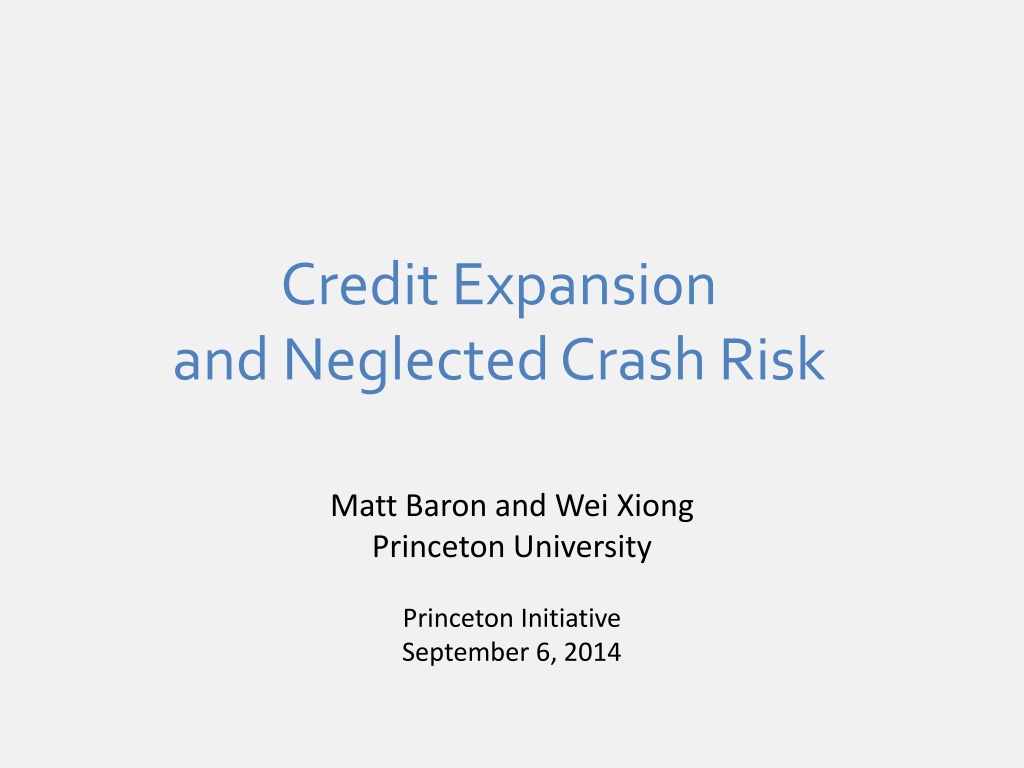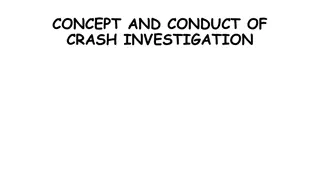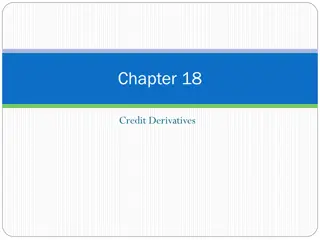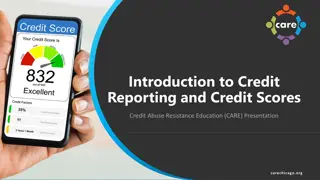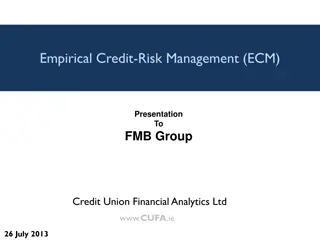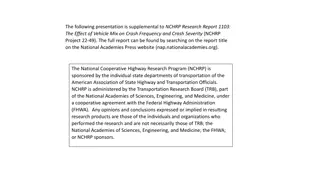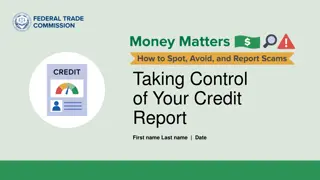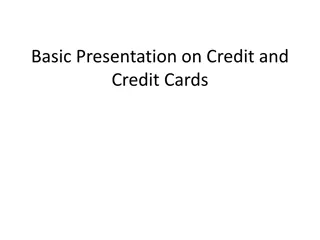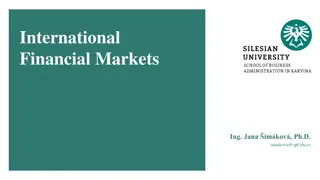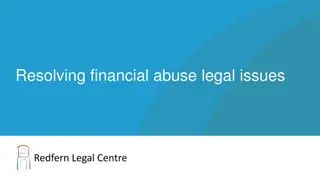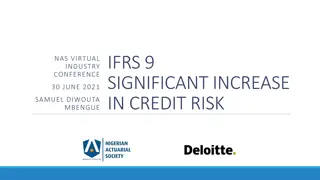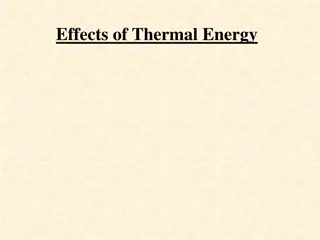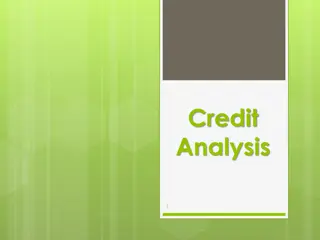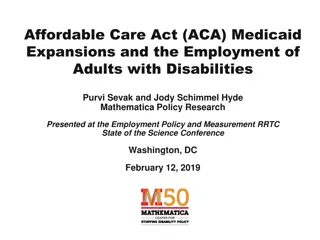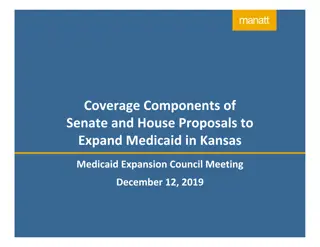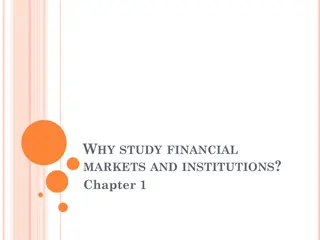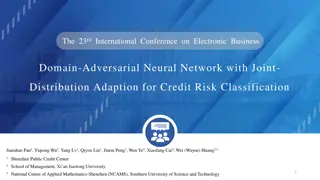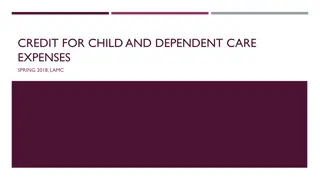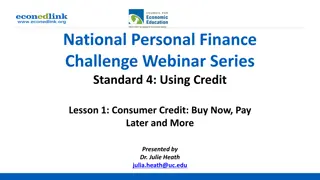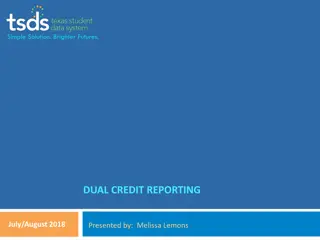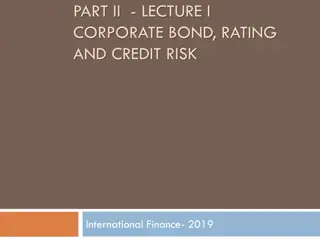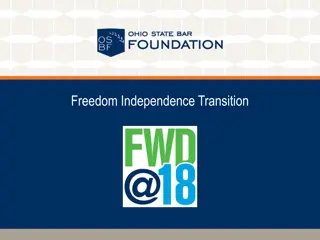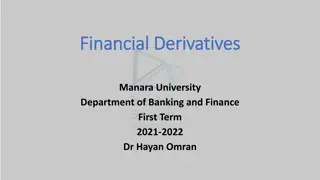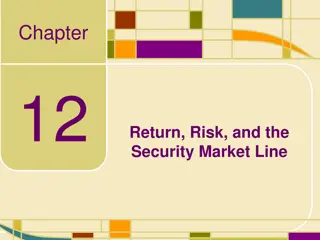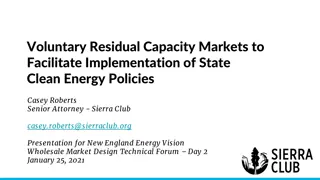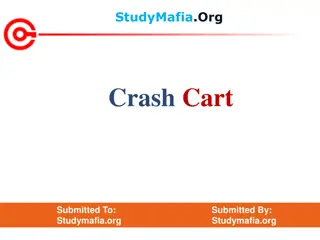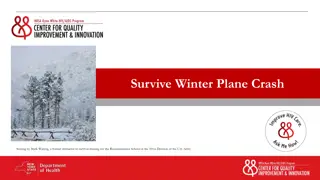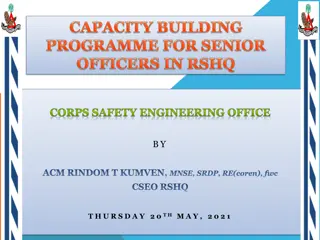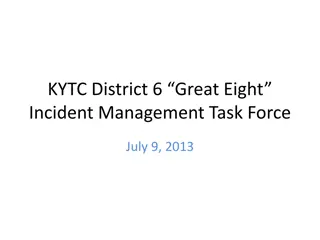Understanding Credit Expansion and Crash Risk in Financial Markets
Credit expansion can lead to financial instability and crash risks in developed countries, as evidenced by historical data. Various factors such as agency problems, implicit guarantees, risk appetite, over-optimism, and behavioral frictions contribute to credit expansions. Shareholders often fail to recognize imminent risks during credit expansions, leading to negative returns post-expansion.
Download Presentation

Please find below an Image/Link to download the presentation.
The content on the website is provided AS IS for your information and personal use only. It may not be sold, licensed, or shared on other websites without obtaining consent from the author. Download presentation by click this link. If you encounter any issues during the download, it is possible that the publisher has removed the file from their server.
E N D
Presentation Transcript
Credit Expansion and Neglected Crash Risk Matt Baron and Wei Xiong Princeton University Princeton Initiative September 6, 2014
Consequences of credit expansion Credit expansion may lead to financial instability Recent global financial crisis The Great Depression in the U.S. Mishkin (1978), Bernanke (1983), Eichengreen and Mitchener (2003) International financial crises Demirg -Kunt and Detragiache (1998), Kaminsky and Reinhart (1999) Borio and Lowe (2002), Taylor and Schularick (2012), Reinhart and Rogoff (2009) Credit frictions have significant and persistent effects on the economy Bernanke and Gertler (1989), Kashyap, Stein and Wilcox (1993) Kiyotaki and Moore (1997), Holmstrom and Tirole (1997) Theoretical effort to integrate the financial sector with macro models Brunnermeier & Sannikov (2013), Gertler and Kiyotaki (2012), He and Krishnamurthy (2012)
What causes credit expansions? Agency problems Misaligned incentives with shareholders Allen and Gale (2000) and Bebchuk, Cohen, and Spamann (2010) Implicit guarantees provided by the government Rajan (2006, 2010) and Acharya, et al. (2010) Elevated risk appetite Danielsson, Shin and Zigrand (2012) Adrian, Moench and Shin (2013) Over-optimism Minsky (1977) and Kindleberger (1978) Behavioral frictions: Neglected risk (Gennaioli, Shleifer and Vishny, 2012, 2013) Group think (Benabou, 2013), extrapolative expectations (Barberis, 2012), this-time-is- different thinking (Reinhart and Rogoff, 2009) Agency frictions and elevated risk appetite may also be present: Bankers are likely to seek risk to cater or take advantage of optimism of shareholders. Stein (1998) and Bolton, Scheinkman and Xiong (2006), Cheng, Hong and Scheinkman (2012)
Our approach We examine causes and consequences of credit expansion through stock prices Stock prices aggregate shareholders expectations and preferences regarding credit expansion A simple measure of credit expansion: 3-year change of bank credit to GDP Data available in panel of 24 developed countries 1920-2012
Whats in this paper? 1. Credit expansion predicts a higher probability of crash risk in bank equity index and equity market index in a sample of 24 developed countries, 1920-2012. 2. But despite the elevated crash risk, the equity premium is lower rather than higher during credit expansions. Presents a challenge to a narrowly-focused agency view of credit expansion Suggests that shareholders do not recognize imminent tail risk during credit expansions 3. Returns subsequent to large credit expansions are substantially negative. Difficult to reconcile with elevated risk appetite / intermediary asset pricing view More likely, reflects the over-optimism of shareholders during credit expansions.
Related research Predictability of crises: Borio and Lowe (2002) and Schularick and Taylor (2012): credit expansion predicts banking crises Broker-dealer leverage explains time-varying risk premia Adrian, Moench, and Shin (2013), Adrian, Etula, and Muir (2013), Muir (2013) Our analysis highlights the substantially negative equity returns during credit expansions rather than the largely increased equity premium after crises. Optimism in the recent housing crisis Cheng, Raina, and Xiong (2013) Debate on increasing required bank capital Cost of bank equity is not constant but dramatically time-varying over the credit cycle And is rather cheap during credit expansion
Related research Pricing of tail risk Reitz (1988), Barro (2006): disaster risks as an explanation for the equity premium puzzle Time-varying disaster risk Gabaix (2012) and Wachter (2013) Gourio (2012): disaster risk and credit risk Bank equity premium and tail risk: Gandhi (2011) and Gandhi and Lustig (2014) Explain time-varying equity premium of bank stocks in terms of disaster risk but in the opposite direction of what we find Gennaioli, Shleifer and Vishny (2012, 2013): tail risk might be neglected Weitzman (2007): subjective expectations of crash risk Important to account for investors subjective beliefs in tail risk, which may or may not be fully consistent with the actual tail risk Chen, Dou and Kogan (2013) Not to treat tail risk as dark matters in finance
Data 24 developed countries: 1920-2012 Variables: Credit expansion From merging Schularick-Taylor (2012) & BIS data 3-year change in bank credit to GDP of households and private non- financial corporations Equity index log excess returns (including dividends) Banking sector Broad market Controls: D/P, term spread, book/market, Inflation , i/k corporate spread, consumption to wealth
Credit and equity prices before and after banking crises Credit and equity prices Bank credit / GDP (relative to country's mean) Cumulative excess total returns 20% 40% 0% 30% Bank credit / GDP -20% 20% Broad market -40% 10% Bank stocks -60% 0% -80% -10% -100% -20% -5 -4 -3 -2 -1 0 1 2 3 4 5 Years since start of banking crisis
Summary statistics Bank credit expansion tends to follow: Higher GDP growth Lower stock market volatility, corporate spread, sovereign spread. Highly correlated with other credit variables Various other credit aggregates Leverage: household, corporate, and banking sectors International credit flows
Regressions 1. Hypothesis 1: Credit expansion higher crash risk Probit: use credit expansion to predict crash events K-quarters ahead (K=1,4,8) Crashes in both bank stock index and market equity index 2. Hypothesis 2: Credit expansion higher equity premium OLS with fixed effects: use credit expansion to predict future mean excess returns 3. Hypot. 3: Large credit expansion large negative returns Regression on indicator 1credit expansion>x to predict future returns
Regressions 1. Hypothesis 1: Credit expansion higher crash risk Probit: use credit expansion to predict crash events Pr[ ? = 1 ] = [??+ ? ?????????????????? ?,?] 2. Hypothesis 2: Credit expansion higher equity premium OLS with fixed effects: use credit expansion to predict future mean excess returns r [ (predictor ' e ] = + variables ) + t i, K i i, t 3. Hypot. 3: Large credit expansion large negative returns Regression on indicator 1credit expansion>x to predict future returns + = ] r [ i K t i, + e (1 ' ) credit expansion x i, t
Standard errors Panel regressions (OLS, probit) with fixed effects Residuals are correlated: across countries (due to common global shocks) over time (due to persistent shocks within countries) Need for dually-clustered standard errors For OLS: implemented with exact formulas from Thompson (2011) For probit and quantile: block bootstrapping Non-overlapping returns delete intervening observations to eliminate autocorrelation overly conservative approach
Predictive probit regressions using crash indicators Pr[ ? = 1 ] = [??+ ? ?????????????????? ?,?] Marginal effects reported (bank credit/GDP) in standard deviations (within country)
Predicting the equity premium r [ (predictor ' e ] = + variables ) + t i, K i i, t (bank credit/GDP) is in standard deviations (within country)
Optimism or elevated risk appetite? Evaluate magnitude of equity premium predicted by credit expansion Compare equity premium after credit expansions and contractions r [ + controls e ] = + (1 ' ) k + t i, K i credit expansion x i, t r [ + controls e ] = + (1 ' ) k + y t i, K i credit expansion i, t
Predicted excess returns after credit expansion and contraction Bank future excess returns 80% 60% 40% Credit expansion (in standard deviations) 20% 0% -2.5 -2 -1.5 -1 -0.5 0 0.5 1 1.5 2 2.5 -20% -40% -60% 8-quarters ahead, without controls -80% 8-quarters ahead, with controls -100% Average bank excess returns 95% confidence intervals from dually-clustered S.E.s (Thompson, 2011)
Alternative crash risk measures Two alternative measures of crash risk / negative skewness in future returns using quantile regressions (predictor ' f Quantile [r q r - ] = + variables ) + t i, + K t i, K i i, t 1. Negative skewness, conditional on credit expansion ( skewness negative = - 5 ( - ) - 95 ) = = = = q q 50 q q 50 2. Median minus mean difference ( = median - ) mean Wald test for linear restrictions H0: negative skew= ( q=50 - q=5) - ( q=95 - q=50) = 0 H0: mean - median = 0 Standard errors of coefficients in linear restrictions are simultaneously bootstrapped for testing restrictions
Quantile regressions and negative skewness (predictor ' f Quantile [r q r - ] = + variables ) + t i, + K t i, K i i, t difference ( = median negative ( = - ) - 5 ( - ) - 95 ) = = = = mean skewness q q 50 q q 50 (bank credit/GDP) is in standard deviations (within country)
Conclusions 1. Credit expansion predicts a higher probability of crash risk in equities in a sample of 24 developed countries, 1920-2012. 2. But despite the elevated crash risk, the equity premium is lower rather than higher during credit expansions. Presents a challenge to a narrowly-focused agency view of credit expansion Returns subsequent to large credit expansions are substantially negative. Difficult to reconcile with elevated risk appetite / intermediary asset pricing view 3. Key implications 1. Over-optimism is likely present in driving credit expansions 2. Important to account for investors subjective beliefs of tail risk, which may or may not be fully consistent with the actual tail risk 3. Belief dynamics are as important as capital constraints in understanding roles of financial intermediaries
